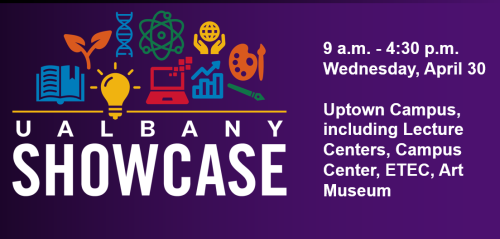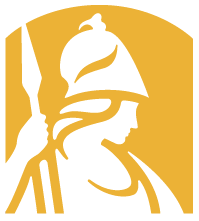Showcase 2025: Exploring the Digital Future of Healthcare
ALBANY, N.Y. (April 29, 2025) — Over the past decade, virtual reality (VR), along with other types of immersive technologies, has surged in popularity. Whether for educational purposes, gaming activities or training simulations, these tools are being used across a wide range of applications and industries.
One area of interest is health care. Practitioners are exploring new ways that VR can assist patients and health providers to achieve better treatments and outcomes, including in surgery, pain management, rehabilitation, mental health and more.
Jeremy Varghese, a second-year computer science master’s student at the University at Albany, is passionate about advancing the use of immersive technologies in the medical community.
He’s working closely with UAlbany Vice President for Research & Economic Development Thenkurussi (Kesh) Kesavadas and Aishwari Talhan, a research scientist with the Office of the Vice President for Research and Economic Development and an affiliated faculty member in the Department of Electrical & Computer Engineering at the College of Nanotechnology, Science, and Engineering (CNSE), on two separate projects that have the potential for a major impact on dentistry and stroke rehabilitation.
“The medical industry is an area where emerging technologies can really thrive,” said Varghese. “Tools like artificial intelligence and VR have tremendous potential to support patients and practitioners. We want to turn our ideas into real products.”
Lower Limb Rehabilitation
Varghese and Talhan are developing a system that uses mixed reality (MR), an immersive technology that blends digital and physical environments, for stroke patients to help them complete rehabilitation exercises for their limbs.

It works by having the patient’s physical therapist first select a recovery program through the tool, based on the patient’s condition and current progress. The patient then remotely completes various guided exercises. These exercises are designed to work on their mobility, coordination, balance and lower limb functionalities. The tool collects the patient’s performance to gauge their progress over time and reports back.
“Dr. Talhan and I were in discussions with the Sunnyview Rehabilitation Hospital in Schenectady, where we brainstormed many rehab ideas and techniques," Varghese said. "We felt that this idea was where we would make the largest impact."
Virtual Dental Simulator
The other research project is focused on pre-clinical dental training. Varghese and Talhan are creating a new VR tool that simulates different dental procedures, such as a routine cleaning, cavity preparation and filling, or a root canal treatment.
Through a VR headset, the user walks toward a patient and opens their mouth. They can then grab dental tools to practice procedures. The tool can also be used to practice detecting cavities and whitening patients’ teeth.
“The idea is to provide dental education in a safe and controlled environment,” Varghese said. “Dental students would use it to practice clinical skills and procedures before interacting with real patients.”
Featured at Showcase
Varghese’s research will be on display Wednesday at UAlbany Showcase day, which brings together the entire University community to highlight the academic excellence of students through their research, scholarship, creative activities and experiential learning.

His work will be featured at the ETEC research and development complex through two research posters and VR headsets that attendees can try on.
Varghese credits both Kesavadas and Talhan for mentoring him during his academic and research journey. Varghese completed his undergraduate studies at the University of Illinois Urbana-Champaign, where he developed a relationship with Kesavadas, who previously served as the institution’s founding director of the Health Care Engineering Systems Center (HCESC).
Kesavadas recruited Varghese to pursue his graduate degree at UAlbany and conduct research at the Immersion Lab, which is focused on developing technologies that enhance human capabilities through wearable systems. He co-founded the lab with Talhan in 2023.
“I first met Jeremy as a summer intern at HCESC working on a project developing a VR simulator for an ultrasound machine,” Kesavadas said. “I was impressed with his skills and passion for VR, so I advised him to pursue graduate school. That led him to move to UAlbany as a graduate student when I transitioned to my new role here.”
“The Immersion Lab aims to give students hands on experience. Once they have these experiences, I see their confidence levels with immersive technologies increase tremendously,” said Talhan. “This is just the start of our work. Jeremy has laid the foundation for future students, who will continue to build and expand on both these tools along with other new applications.”
Along with Showcase, the lower limb rehabilitation tool will be presented in July at the 47th annual IEEE Engineering in Medicine and Biology conference in Copenhagen, Denmark. The event aims to highlight innovative advancements in healthcare delivery and patient outcomes.




